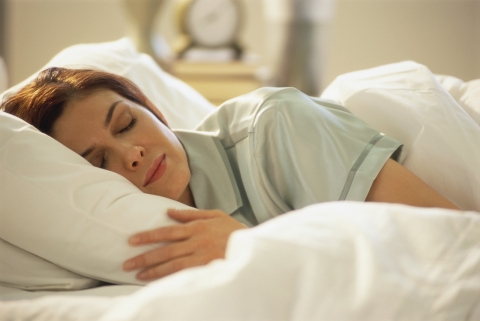t: +44 7772 503 027
The sleep homeostat could hold key to insomnia cure and explain why do we sleep

Why do we require sleep? This question has haunted many an observer of behavior, animal as well as human, since the beginning of time. Now, in a new study conducted with fruit flies, researchers at Oxford University's Centre for Neural Circuits and Behaviour have identified a switch in the brain that compels us to sleep. “The sleep homeostat is similar to the thermostat in your home,” said Dr. Gero Miesenböck, Waynflete Professor of Physiology. “Athermostat measures temperature and switches on the heating if it's too cold. The sleep homeostat measures how long a fly has been awake and switches on a small group of specialized cells in the brain if necessary. It's the electrical output of these nerve cells that puts the fly to sleep.” Their research appears in the journal Neuron.
Working with fruit flies, the team of researchers observed a group of mutant flies that couldn't catch up on lost sleep after they had been kept awake all night. These flies could not maintain their equilibrium since they had lost their homeostasis — their internal stability. And, just like humans, the sleep-deprived flies were prone to nodding off while also being cognitively impaired and exhibiting signs of learning and memory deficits. Investigating further, the researchers discovered how a key molecular component in the brains of the mutant flies appeared to be broken, causing the sleep-inducing neurons to be permanently turned off — it was this that was producing their insomnia.
In the brains of fruit flies, then, a sleep homeostat is responsible for regulating the activity of a handful of sleep-promoting neurons, or nerve cells in the brain, which fire when they’re tired and remain passive when they’re rested. Even more, the homeostat remains uninfluenced by external factors such as sunlight and keeps track of waking hours so that it builds up a sleep deficit separate from the routine sleep cycle governed by a body clock responding to a 24-hour day.
Observing the fruit flies, the scientists hypothesized the human body must use two mechanisms to regulate sleep as well. One is a homeostatic switch similar to that discovered in the fruit flies, while the other is our biological clock, or body clock, which is influenced by the circadian rhythms of a 24-hour day/night cycle and responsive to sunlight and environmental factors. “What makes us go to sleep at night is probably a combination of the two mechanisms,” Miesenböck stated in a press release. “The body clock says it's the right time, and the sleep switch has built up pressure during a long waking day.”
Although the experiments were carried out in fruit flies, the scientists believe their research is relevant to humans. “There is a similar group of neurons in a region of the human brain,” said Dr. Jeffrey Donlea, a lead author of the study. “These neurons are also electrically active during sleep and, like the flies' cells, are the targets of general anaesthetics that put us to sleep. It's therefore likely that a molecular mechanism similar to the one we have discovered in flies also operates in humans.”
The researchers suggest their work in identifying the sleep switch might help scientists discover new targets for pharmaceutical drugs to help people suffering from sleep disorders.
Read more at Medical Daily and Forbes
